-
Posts
4,229 -
Joined
-
Last visited
-
Days Won
98
Content Type
Profiles
Forums
Resource Library
Events
Gallery
Blogs
Store
Community Map
Posts posted by Mayner
-
-
I have updated the website to provide greater clarity around our Kits and RTR Wagons jmdesignmodelrailways.com.
Due to the relatively low level of demand and high production costs our models are available as pre-order items as opposed to stock items.
One of the advantages of 3D printing is that our suppliers have no minimal order quantity for a particular model unlike plastic injection moulding or resin casting, thus its feasible for me to include a several different types of wagons in an order to our printers at a similar unit cost to an order for one type of wagon.
This basically means that our 2 Varieties of 20T Brake Van, 4 Varieties of Covered Wagon, Open Wagons will be continuously be available from stock or pre-order as long as the business continues to operate.
Kits. I have finally gotten round to using the 'k' word after using CKD for a couple of years. Our wagons are closer in concept to the Triang-Hornby coaches of the 60s and 70s where everything bolted or clipped together or the American "shake the box kits" rather than conventional kits which sometimes take considerable skill and time to assemble.
The CKD kits fit together with minimal cleaning up or preparation apart from moving excess supports (tiny pieces of plastic) that may be attached to the print. The design is not unlike a typical plastic injection moulded wagon, the pewter weight fits into a rebate in the floor of the chassis, the body can be secured to the chassis with a small blob of superglue near each end. Newly printed 3D parts sometimes distort during 'clean up' at the printers or handling, but will return to their normal/correct shape when immersed in hot but not boiling water.
RTR wagons
I expect to resume producing all available wagons in RTR form from March 2024 when our print suppliers return following the Chinese New Year. Models produced will depend on total 'numbers' (ideally 15-20 wagons) of pre-orders received as opposed to minimal orders for a particular wagon. There is no problem in slotting in 1 or 2 LMA's or GSWR Vans within a larger batch Brake Vans, Opens and CIE Vans
-
 4
4
-
-
2 hours ago, Rob said:
Well done all round- on the fantastic display and the work for the cats


We have four cats one rescue and 3 strays at home in New Zealand and 2 one rescue and 1 wild Tom in North Dakota. Family had taken pity and began feeding the Tom during the winter months and now had his own door and bed in the garage.
-
 2
2
-
-
4 hours ago, patrick said:
Any plans to do the grain hopper again John?
Will need to carry out some relatively minor tweaks to the CAD work before re-releasing the Grain Hopper.
Our supplier has been struggling to produce consistent prints of the hopper body with a high reject rate.
-
 2
2
-
-
Couple of days later went to Whapeton ND to stock up on groceries and diy supplies (installing a cat door) and checked out the rail yard in the twin-town of Beckenridge MN before returning home by Tenney. Temperature had dropped a few degree and wind-chill increased so not really weather for standing around.

Beckenridge the headquarters and operating base of the Red River Valley & Western. The city of Beckenridge is on the eastern bank of the Red River of the North which drains the Valley area of ND an MN. The tracks in the foreground are the BNSF main line and siding (crossing loop), the RRVW Loco Shops and Offices single storey buildings in left background. BNSF/RRVWR yard lead in the background between the loco spur and elevators. A lot of older RR infrastructure survives at Beckenridge including the former Great Northern Depot Building and Roundhouse.

Looking the opposite direction East towards Aberdeen Line Junction and Minneapolis. The elevators in the distance is Red River Grain a Shuttle Elevator served by a tennis racket shaped balloon loop with a separate connection to the BNSF line https://local.echopress.com/breckenridge-mn/red-river-grain-co-218-643-3738

The RRVWR started out in the late 1980s with ex ATSF CF7 locomotives. Santa Fe re-builds of 1940s Cab Units as road switchers passed on in turn to Short Lines, some were used for switching elevators after CF7s were banned from road use when locos failed to meet cab crash worthyness requirements.

For many years the mainstay of RRVWR motive power was its fleet of Caterpillar powered GP20-C locos 1980s Generation II locomotive of former BN GP20s. The Caterpillar locos produced distinctive dark clag when accelerating.

A pair of 2000HP EM GP 38-2 arrive with the Hankinson Job. The train includes laden bulk power cars from a flour mill at Fairmount and tank cars from an Ethanol plant at Hankinson on the CP Line, together with grain cars. The RRVWR serves industries and towns on the CP line as a result of a 1950s trackage rights arrangement when the Great Northern abandoned 30-40 miles section of line that ran parallel to the SOO later CP line.

The latest addition to RRVWR motive power are a number of former BNSF SD70 units. Useful for hauling 100+ car Unit Grain Trains from shuttle and larger elevator complexes to the BNSF interchange.
Tenney. Passed Tenney on the way home, grain trucks still arriving an drier operating but not a freight car in sight. It looks like the elevator loaded and dispatched a train between Tuesday afternoon and Thursday morning!
-
 8
8
-
-
3D printed wagons.
I have updated the website to reflect current stock levels of RTR wagons and pricing and availability of CKD wagons.
I expect to reduce our lead time for fulfilling orders for CKD wagons to 6-8 weeks from March onwards once our printers resume production following the Chinese New Year.
We are planning to supply both the planked and sheeted ducket version of the CIE 20T Brake Van, all four versions of the GSWR/GSR/early CIE covered vans and the GSR/CIE Standard 12T (Wooden Bodied) Open Wagon. The Open Wagon can be supplied separately for modellers who want to fit 'an Irish Chassis" with its distinctive single lever brake gear to a Dapol or Hornby open wagon body.
https://jmdesignmodelrailways.com/
New models for 2024.
I am currently working on a set of scratchbuilers parts for 60 Class or D14 loco and will probably follow up with a ex-MGWR Standard Goods in GSR form with superheater boiler if anyone is interested.
Both locos are on my long term wish list, though I have no plans at this stage to produce a kit or batch built rtr model of either type, from my experience with the JM Design GSWR 52 Class and MGWR 2-4-0 the numbers simply don't stack up.
-
 5
5
-
 2
2
-
-
16 hours ago, minister_for_hardship said:
A 4-4-0 or 2-4-0 wouldn't have both pulling power and speed to have max bums on seats and not hold everything else up on a modern railway. Something like a go most anywhere, modestly sized new build 4-6-0, perhaps a version of the 400 or 500 class. The new build Mogul may be a good compromise.
CIE produced a proposal for a 372 Class 3-cylinder mixed traffic 4-6-0 in 1945, technically a re-build of the Woolwich moguls the new locomotives would have been basically a 3 cylinder version of the successful 500 Class. Presumably the 3 cylinder layout with lower "hammer blow" would have resulted in lower track maintenance costs and allowed wider availability compared to the 2 cylinder Woolwich, 400 and 500 Class with their large outside cylinders.
Personally I think a second WT would have been a better option for the RPSI from an operational perspective than a Mogul as a new locomotive, but would not have the same emotional appeal for enthusiasts and fund raisers.
The GSR Locomotive Drawing Register was prepared by the authors of GSR Locomotives a reliable source.
-
 4
4
-
-
Some trainspotting during New Year family re-union in South East North Dakota, a lot warmer (hovering around freezing) for this time of year and no snow so far!
Re-tracing my former stomping ground on the CP (Soo Line) & BNSF (BN formerly GN) lines in SW Minnesota.

Tenney. Not much sign of life apart from a cloud of steam from the Wheaton Dumont Co-Op elevator and a long string of grain cars indicated that the elevator was in operation receiving grain for dispatch by rail on 2nd January 2024. Tenney formerly the smallest city (population 6) was unincorporated as a city by a vote by the 5 remaining residents in 2010 and abandoned the remaining buildings re-sited or removed, view is from the "town side" of the elevator. I took a photo of the Tenney Pop 6 sign and 6 birds on a wire 20 years ago.

Grain cars as far as the eye can see. On yard track alongside the CP Line from Minneapolis to the Canadian Border at Portal.

Loaded and empties: Cars are often switched by a Loading Shovel owned by the elevator company, sometimes a Trackmobile.

Business side of the elevator. Yellow gantry above track is an anchor point for safety harnesses used by workers walking the roofs of the grain cars opening and closing hatches, tracks are graded to allow gravity to assist moving cars. Unloading shed and scales is a recent addition, grain trucks were arriving frequently with 3 arriving during the 10 or so minutes I spent at Tenney

Aberdeen Line Junction between CP and BNSF. A couple of miles East of Tenney grade crossing between line typical of the Mid-West between CP East-West and BNSF North-South. There is a triangular junction between the CP & BNSF lines just beyond the diamond. The BNSF and shortline Red River Valley and Western have running powers over the CP west of Aberdeen Line Junction to reach an isolated section of the former Great Northern as a result of a joint trackage arrangement dating from the mid-1950s.
BNSF East Bound Unit Grain Train. I saw but was unable to take a picture of an East/South bound Unit Grain Train as a I drove from Aberdeen Line Junction towards Beckenridge Minnesota, but saw a train moving through Beckenridge Yard in the distance and managed to catch up up with a second east bound unit grain running about 5 minutes behind the 1st. Consist fairly typical lead by a pair of large GE units trailed by a single unit at the tail. Unit trains serve Shuttle Elevators and basically run as fixed formation trains on the UK "Merry go Round" principal between the Elevators milling centres or ports. The introduction of shutte elevators caused considerable controversity in the Mid-West Class 1 railroads initially providing shipping discounts for 50 and later 100 car loads an later refusing to load/handle less than 100 car lots, leading to closure of smaller elevators and increased trucking between farm and elevator.

Cars mainly BNSF with some leased and

some BNSF "fallen flags" a pair of cars in BN livery 28 years since BN absorbed the ATSF forming BNSF

Trailing loco appears to be a standard feature of Unit Grain trains, The similarity between BNSF/Great Northern and CIE "Super Train' colour schemes appear striking
-
 8
8
-
-
NorthWallDocker quite flattered that my writing about Keadue inspired you to build a C&L/MGWR layout.
1. I don't have anything more specific on Stewart Hines Model Railway Magazine wiring article, but may be covered in his "Model Railways' Haynes explains series 1977. https://www.amazon.com/Model-Railways-Haynes-explains-Stewart/dp/0854295461/ref=cm_cr_arp_d_product_top?ie=UTF8
I decided to try similar principals on Keadue using Blue Point machines with locally operated points and walk around control, eliminating the need for a control panel and section switches. The only section switches on Keadue are a number of switches that allow locos to be isolated on the turntable loco shed road.
1. Wiring
Probably simplest to explain through wiring diagram of the crossover between the Main-Line and the yard at the Boyle/Sligo end of the yard, the arrangement at the Arigna/Ballinamore end of the yard is similar. The layout is currently controlled by two hand held controllers (1 Gaugemaster, 1 club project) that plug into DIN sockets in the baseboard fascia. Two sockets feed the main line at either end of the station, the main line feeds are conventionally wired at the toe end of the crossovers from the Main Line to the Yard. A third socket feeds the yard through a "heel feed" to the loco-shed road, locos on the yard are controlled by the "Yard Controller" when the crossover between the main and yard is normal allowing a train to run on the main line under control of the main line controller while another loco is shunting the yard.
Reversing the crossover points allows trains to arrive and depart from the loop using a main line controller while simultaneously allowing locos to move/turn in the loco yard.
I used the Blue Points on Keadue to test the concept for more complex application, using for routing power using the auxillary switches on Tortoise Switch machines on a future layout potentially using signals to control track power, but that's another days work!
2. Shelf baseboard width. I tend to use 12" as a maximum baseboard width on shelf or book case layouts in both N and 4mm, the relatively narrow baseboard with also helps make scenic sections look longer. I have set up 18" wide shelf baseboards for a future layout, (on extended proprietary brackets), currently used for storage has shown no signs of movement in over 10 years!
3. Minimum radius. The 90º curve on the Tramway Section is approx. 2' radius, though may be tighter in places. The Branchlines C&L 4-4-0T was designed with the bogie which slid on a central pivot complete with side control springs, which could be challenging to set up and reduced side to side movement. I converted both my C&L 4-4-0s to a more conventional bogie pivot arrangement, though the bogie wheels sometimes short on the inner edges of the whitemetal outside cyliners.
Its likely to be more challenging to identify a workable minimum radius for the ex-CBPR 2-4-2T with their long wheel base and radial trucks fore and aft. I usually drawn or prepare a mock up of the chassis and wheels to check clearances on curves before assembling a loco. It may be worth contacting Phil 3150 who built a model of 10L from a Worsley Works set of parts.
4. Learnings: Keadue has evolved considerably during the 20 years since we moved to New Zealand. Originally intended as a self-contained shelf layout designed to fit an 8'X1' space in the home office and a test bed for readily available baseboard material and foam track underlay. The layout was extended to an L shaped terminius to fiddle yard (11'X6') shelf layout with scenic works substantially complete just in time for a Model Convention in which delegates visited the layout 8 years later! Apart from maintenance and some additional stock I have done very little work on Keadue since the convention.
The main lesson has been not to use MDF as a trackbase material if planning to use water as a wetting agent when gluing down ballast, at the time I used MDF as it was difficult to source good quality stable plywood from builders merchants or DIY superstores. I now buy ply from a specialist ply and veneer stockist.
Although I have an almost life long interest in the C&L, I tend to switch between projects, scales and prototypes which had a knock on effect on Keadue.
-
 2
2
-
-
3 hours ago, jhb171achill said:
This is it, yes! It's a different culture here, I suppose; we do ourselves a disservice comparing ourselves to the railway enthusiast / preservationist / even modelling, scenes in Britain, particularly England. England alone probably has more railway modellers, preservationists, railway museums and preserved railways than most of the rest of the world put together.
Another factor is the absence of wealthy sponsors/owner operators like Alan Peglar, Robert McAlpine, and Ian Welsh (New Zealand) from the Irish preservation/excursion train market.
Peglar and McAlpine were responsible for the preservation and restoration of the "Flying Scotsman". Peglar was one of the pivotal figures in preservation, buying the locomotive outright, paying for its professional restoration and persuading BR to allow the loco to run on its metals. Peglar ran out of money and went broke when the Scotsman was touring the United States during the early 70s, McAlpine bought the loco and returned it to the UK.
Ian Welsh the founder of New Zealands "Main Line Steam Trust" is claimed to have the largest private collection of main line steam locos in the World, with collections in New Zealand and South Africa.
https://www.mainlinesteam.co.nz/history
-
 3
3
-
-
On 22/12/2023 at 12:21 PM, DiveController said:
I konw
I know the photo you’re referring to, the color scheme seeming quite out of place with any other opens or flats even as a PWD
The red scheme for PW wagons appears to have been rare possibly at the time few people were taking colour photos of wagons.
There are a number of colour photos of 'red' PW wagons in the Wagon collection on the IRRS Flickr site, including a freshly repainted ex-GN 6w Ballast Wagon complete with wheel logo and a couple of more workday photos including GSWR/GSR/CIE Dropside Ballast with wheel logo and older style of Ballast Hoppers.
The different colour scheme may have been intended to distinguish PW from revenue stock, the GSR apparently painted narrow gauge C&L Ballast Ballast wagons yellow/brown during the 1930s.
The IRRS Flickr site is a real eye opener with colour photos of pre-Amalgamation wagons in service into the late 60s including ex-Midland and West Cork Open Wagons (Irish Standard Open) and a MGWR Covered Wagon (similar to GNR) in brown with wheel logo).
I guess I will have to add some of these wagons to my collection.
-
 2
2
-
-
On 17/12/2023 at 9:33 AM, Broithe said:
He (the bull)is supposed to have escaped from a slaughter house, done well if he has been adopted by an animal sanctuary.
-
 1
1
-
 1
1
-
-
A mystery solved, there is a 1969 Tom Wall photo of 24401-24515 series Ballast Wagon 24514 in the IRRS Flickr album https://www.flickr.com/photos/irishrailwayarchive/51907052281/in/album-72157661623942928/ The photo is copyright and the download option is disabled.
The wagon is a 2 plank dropside with tapered steel end stanchions, the traditional Irish wooden underframe betrays its origin as a cattle wagon.
Interestingly the body (sides and ends) are painted red on a grey underframe, the wheel logo is positioned near the centre of the body.
There is also a photo of an older version of the 'Ballast Wagon" loaded with sleepers, sides removed and offcuts of rail used as stanchions,
Possibly a new wagon for Leslie, all my wagons run on the steel versions of the "Standard' underframe.
-
 2
2
-
 1
1
-
-
Its worth while looking at the option of battery rather than track power for a garden railway. Some very good/reliable cheap Chinese "Wild West" battery sets with radio control https://www.ebay.com/itm/374239915861?hash=item57226fef55:g:yzQAAOSwg01jE9Qr&amdata=enc%3AAQAIAAAA8Dih0xr0hI9tHsF2r2f7LKUVYw7RliQXv8sNykgCHW826cv6zOt1YzufhQvwXk8aAcvmypFKHNzzCn7hYzdaB4fXSsiOjiiXgUU%2FStASKPWPdZgm%2B9ceE%2Bkq5dwXgUnO9J9nlsdxzia2lXzu5dVWJaZ1roJfqo9DoYZg67wa0k%2BhBDcyIJbTMXOYxUJwcOLfKdy5OnR%2Fz5BDpC%2FxVcp9zwQEtSqH3w0wDeewOI0jwdBtH6pvXUBpFQLCiEmyXCyvRQ4cmwYmaz4KoDj%2FH9OUnKmxqxA1YiFnISup5TvuUkeORGg7A4qhfT%2BL5PrPNmurDQ%3D%3D|tkp%3ABk9SR5z2otGQYw
The Wild West Set once available through the NZ equivalent of Walmart or Tesco Superstore was popular with garden railway modellers, who sometimes kitbashed the locos and stock into models of British outline narrow gauge. I bough a set for my daughter when she was 2 and the engine was still going strong when we donated it to a charity shop when she was 13.
I use battery remote control on my garden railway using a system similar to RC Trains https://www.rctrains.co.uk/Receivers.htm , Crest Revolution is a more widely available battery RC system https://www.revoelectronics.com/. Most of my locos are American 3' narrow gauge proprietary models mainly of brass construction with a couple of kitbashed Bachmann locos.

The Accuracraft DRGWR K27 2-8-2 463 is basically the pride of the line and very heavy with batteries and electronics in the tender
I have one Irish 3' gauge loco a model of Schull and Skibbereen 'Erin' with a scratchbuilt plasticard body on an early Playcraft (LGB) 0-4-0 chassis. The model is likely to be 20+ years old bought second hand from its builder in the UK, with no sign or warping or deterioration to the plasticard body.
I started to convert the loco to battery RC with a LiPol battery in the boiler, but had second thoughts with the fire risk early liPols



Chassis block is Playmobile (made by LGB) bogie fabricated from plasticard.
I need to fabricate a replacement cow catcher after the original was damaged.
-
 5
5
-
-
1 hour ago, Horsetan said:
Available in PDF form, at no charge.
Printed Branchlines catalogues/leaflets were supplied 'free' when I ordered some motors and gearboxes about 12 months ago.
-
The Peco or Dapol OO Gauge turntable kits are probably the cheapest and most straightforward options for installing a turntable, a number of specialist manufacturers including London Road Models produce 45-50' tables but they are expensive and not really suitable for an in-experienced modeller https://www.rmweb.co.uk/blogs/entry/17974-building-a-london-road-models-50-turntable/
Although a CIE 121 Class Diesel Loco will just about fit on the Peco HOn3 turntable, I would recommend 50' as a minimum if you are planning to run tender locomotives! Not sure if the Peco N or HOn3 turntables would be up to it for regularly turning heavier OO gauge locos (both N & HOn3 tables shareb a common well and pivot arrangement.


Probably the most important point to consider is that a turntable takes up a lot of space on a baseboard, the Peco and Dapol turntables are over 300mm in diameter.
The Peco HOm turntable on my narrow gauge layout takes up most of the space between the running line and the baseboard edge.
If you are building a table from a kit or scratch considerable care is required in the set up of the turntable pivot point and rails on the deck, pivot point has to be positioned in the centre of the pit and deck and the rails/track set up so that everything is symetrical if the turntable is to operate correctly.

My turntable is operated mechanically using Mecano parts based on a diagram in a very old (1960) C J Freezer book on model railways, table is aligned by eye. Some modellers use electric motor drive with quite sophisticated solenoid operated indexing arrangements, others use stepper motors.
I also have a pair of turntables on a G Gauge garden railway, purely functional turntable decks/trackbases are simply strips of wood pivoted on galvanised coach bolts, track is aligned by eye with a locating pin arrangement soldered to the rail web 100% reliable in over 10 years use.
-
 8
8
-
-
On 19/12/2023 at 5:14 AM, MOGUL said:
Spotted this pic of the CIE creosoting plant in the parting shot by Norman Johnston, it was taken in 1970 so predates the PWD flats but does show a similar wagon (likely a predecessor) awaiting loading with a fresh load of hot stick stick pine.. I would imagine the PWD flats were regularly loaded here @Warbonnet, sleeper loads on the cards?
Also of note is the extra broad gauge track for the overhead crane
Interesting one Mogul possibly another example of CIEs practice of rebuilding redundant wagons for PW use

The Flat in the photo appears to be another example of CIEs practice of converting redundant traffic wagons for PW purposes. The number on the end appears to be numbered in the 244xx series. Locomotives and Rolling Stock of CIE and NIR (1979) indicates that Ballast Wagons 24401-2415 were converted for 1953 built cattle wagons in 1964.
I haven't seen a photo of these particular wagons, traditionally GSWR/GSR/CIE Ballast Wagons were two plank dropside wagons with fixed ends, sometimes with end stanchions. Its possible the sides were removed from wagons used to carry sleepers. Sides and ends "Ballast Wagon" conversions carried out in the 70s
The ballast wagons in the Ratio LNWR PW Wagon Pack were a reasonably close approximation of the GSWR/GSR/CIE two plank Ballast Wagon complete with Irish style brake gear, though shorter and on a wooden underframe. The Bolster Wagons in the set looked reasonably close to the "Irish Standard" version of the Flat Wagon.
Assembled many years ago this wagon has lost its brake lever, CIE Snail and stencil lettering was by Blackham Transfers. Transfers were rub-on with little scope for adjustment once in place.
Fixed ends with extended posts, Irish wagons tended to use a T angle
-
 2
2
-
-
A (very) small number of RTR wagons are available from stock for delivery mid-February 2024 (NZ basically shuts down from Christmas to mid-January)
Basically we assembled our stock of CKD kits because we have not received orders or enquiries in recent months.
We are planning to carry a small number of CKD Brakes, Van and Opens in stock from February 2024 onwards allowing orders to be fulfilled within a 3-4 week timeframe.
The 20T Brake Van to be available with both planked and sheeted duckets. A John Edgington proto indicates that vans with sheeted duckets were in use since the mid-1950s allowing a greater variations in livery.
20T Brake sheeted duckets 23544 $85.00 nz ----------€49.95 at current Shopify rate.
GSWR/GSR/CIE Covered Wagon with aluminium sheeted body and planked doors Flying Snail. Inspired by a photo in Loco Motives and Rolling Stock of CIE and NIR (79)
$85.00 nz ----------€49.95 at current Shopify rate.
I came across a grounded example in a field near Kinegad about 20 years ago. There was horizontal planking behind the aluminium sheeting, the sheeting presumably used to protect the planking from the weather allowing softwood rather than hardwood planking to be used.
CIE 1946 version of the Covered Wagon. Similar construction to the sheeted GSWR van but on a 10' wb chassis. Some of the '1946 Vans" are available at a discount the angle strapping at the corner at one end does not extend to the bottom of the chassis. $75.00 nz ----------€43.95 at current Shopify rate.
GSWR/GSR/CIE Covered Wagon Planked CIE wheel logo $85.00 nz ----------€49.95 at current Shopify rate.
GSR/CIE Standard Open Wagon. Available CIE Snail or Wheel Logo $70.00 nz ----------€40.95 at current Shopify rate.
This is an upgraded version of our original model, with improved label clip detail, deeper floor and strengthened door springs
GSWR/GSR/CIE Covered Wagon planked. Available at reduced price as a result of defect where diagonal strapping did not print correctly at intersection with vertical T strapping.
$75.00 nz ----------€43.95 at current Shopify rate.
An unexpected consequence of printing on a higher resolution printer than the original locally produced test prints! I have since updated the CAD work for the model to eliminate this particular problem.
-
 6
6
-
-
AEC Railcars would have used the 'Direct Curve" during the final years of Limerick-Tralee passenger services and possibly CIE 1950-60s stock on Limerick-Listowel Race Specials and other special passenger trains after regular passenger workings ceased.
The exception appears to have been the "Limerick Foynes" Mixed which appears to have usually made up and departed from the goods yard. There is a story of an enthusiast arriving in Limerick intending to ride on the Mixed with no sign of the train as it approached departure time. Asking an official our enthusiast was told to stand at the end of the platform, the loco and the coach pulled up at the platform, the sole passenger alighted before the train backed out to the Check Cabin and the Foynes Line
-
 1
1
-
-
25 minutes ago, jhb171achill said:
All true; and in all reality - you mention London - the ONLY way is underground. With every street on the surface having a finite width, we can reorganise them till we're blue in the face to take cycleways, trams, traffic, buses, or trees with nice benches under them, for the vandals to graffiti over. We can single or double traffic lanes all we want, but at the end of the day every one of the above that is expanded is directly and oppositely to the detriment of the others. And no matter what the Greens say - and to be fair, much of their mutterings ger more criticism than is fair - people will never, ever give up their own personal private transport now that after a century we've got used to it, no matter what the price of petrol, and be they powered by battery, petrol, diesel, gas, paraffin, steam or guava juice. So private vehicles will retain at least some sort of presence in the city for ever. And the population continues to increase which means more of them.
The only show in town in the long run - yes, I know our politicians don't understand what "long" means - is a fully comprehensive underground railway system. Better now when the government has the money than at a future date when we mightn't. We had the world's first commuter railway. No reason why we can't get an underghround railway to match! It needs to connect Swords and Dunboyne north, Maynooth and some of those new places on the Cork line to the east, and Bray / Tallaght / Knocklyon south.
Might have to go elevated suburban systems similar to Singapore https://www.railjournal.com/passenger/metros/high-speed-track-completed-at-singapores-rail-test-centre/ with the increasing risk of flooding in low lying coastal cities.
The New Zealand Treasury estimated that last Januarys Auckland Anniversary floods cost between $9-15 NZ billion damaged to public infrastructure (including roads and rail) between $5-9 Billion.
The heavy rain and flooding resulted in extensive traffic disruption and put the electrified suburban rail system out of operation and caused severed damaged to the 130Km North Auckland freight line which is expected to be out of service until early/did 2024.
-
 1
1
-
-
4 hours ago, Ironroad said:
Many thanks to John for taking the time to provide such an amazingly detailed response to the questions I was asking.
My objective was to establish legitimacy for using available models of British Rail containers as loads on Irish wagons and that looks to be the case, albeit not on the LB flats. However I got more than I bargained for.
The pictures already posted of standard BD type containers would seem to prove that these were to be seen on Irish Rails with both British Rail logos and with BLMC (British Leyland) labels. However while their use for the transportation of meat probably suggests there were significant numbers of these containers to be seen, those used for this traffic were probably not of the standard type. British Rail had two variants for meat traffic, the BM container which was ventilated & in Crimson Lake, Maroon, & Bauxite liveries depending on period, and the FM which was insulated had a plywood body and white livery Both had different end doors to the BD. Source; https://igg.org.uk/rail/5-unit/unitload1.htm
Since one question invariably leads to another it would be interesting to know if both BM and FM containers were used for Irish meat traffic.
Since I'm not aware of models of the BM and FM variants I'll probably content myself with a few of the BD type. One in Lyons Tea colours would be nice and perhaps a simple repaint job assuming the lettering can be found - may I ask what is the origin of the one in your picture John? Thanks
Lyons Tea container Peco card kit. https://railwaymodels.uk/product-peco-r-66jl-lyons-tea-container
Phil https://igg.org.uk/rail/5-unit/unitload1.htm provides an overview of UK Pre-ISO rail containers also used by the GNR, UTA and County Donegal.Type B were the most common that appeared in Ireland

Type B containers in 'Irish Standard" open wagons wooden under framed version (same as SSM kit)

Aluminium container on LL (early 1960s) flat. Possibly industrial alcohol from Ceimici Teoranta Kilcar County Donegal plant shipped by rail from Derry
Brian Flannigan's Flickr site is a great source of photos of Irish wagons and containers during the transition from loose coupled to Liner Train Operation https://www.flickr.com/photos/holycorner/
-
 3
3
-
 5
5
-
-
18 hours ago, WRENNEIRE said:
The aluminium container appear to have been introduced in the early 60s possibly replaced(as rail containers) by CIE ISO containers late 60s/early 70s.
May have been intended primarily for traffic to Donegal on the "Derry Vacuum" through Strabane and Waterside following the closure of the Derry Road. There are 1960s photos of what look like this type of container of the Derry Vacuum in both Colm Flannigan's Diesel Dawn (MPD hauled) and Tom Ferris Irish Railways in colour (WT hauled
The use of aluminium may have been influenced by the GNR which apparently used aluminium in lorry bodies and containers.
CIE does not appear to have had container wagons as such during the 40s & 50s while the GNR built specialist container wagons for both general container traffic and bread traffic within Northern-Ireland from the 1940s onwards.
CIE introduced 235- 20'-12T-11'wb Vacuum fitted Flats intended for container traffic the early 60 including 3 Guinness Containers----------The 3 Guinness Containers had to be staggered on the GNR Conflats which were to short to allow the containers to be carried in line, possibly a factor in increasing the "standard" Irish wagon length from 16'11" to 20' over headstocks during the 1960s .

The 20'-12T flats appear to have been re-classified as Ballast Wagons during the early 70s, I found one 24566 dumped at Liffey Junction in 83-84. These wagons had a handbrake wheel at one end, broken off in the photo of 24566

LB Flats and containers. The apparent absence of photos of LB flats carrying containers may be due to their intended use as general purpose flats and the small volume of container traffic carried before CIE absorbed the GNR lines in the Republic.
CIE appear to have built approximately 160 flat wagons between 1947 and 1963. 23200-23279 built between 1947-47 are likely to have been on similar design to GSWR and MGWR wagons built during the WW1 era or possibly single bolster flats intended for timber traffic. A single bolster wagon was stored at the Point Depot during the early 80s, but I didn't tale a photo at the time!
In comparison the GNR had 70 "Conflats" in service for general and Guinness container traffic, 141 Bread Container and 117 Flat/Low sided wagons in service by the mid-50.
It was probably easier for the CIE traffic people to allocate an open for container traffic than use a Flat!
Containers.
The South Wexford train in the Oliver Doyle IRRS article is a weekend special transporting meat in BR containers from Clover Meats Waterford to Rosslare, Harbour. On weekdays Clover Meats output was shipped directly on the BR Waterford-Milford Haven? freight service which dis not sail on the weekend.
During the 1950-60s export meat for the UK is likely to have been shipped to the ports in BR containers and then railed to various destinations in the UK, at the time BR controlling many of the shipping services to the UK.
Meat in containers became an important traffic in the 60s with factories in Rathkeale, Dromod and Roscrea sending out meat by rail, there was a note in Herman Shermans 'Day at the Junction' IRRS paper of a AEC Railcars hauling container wagons on the Limerick-Waterford Passenger during the late 60s.
The photo of the BR BMC Auto Parts containers in the Irish Standard open wagons appears to have been taken on the Ballina Branch during the early 70s possibly parts for Dealers and Motor Factors in the West rather than an Assembly Plant.
Private Owner Containers.
Lyons Tea was regularly shipped in flat wagons in BR style containers during the 1960s, used to see a single Lyons container coupled close to an E Class making up a goods on the Kingsbridge Headshunt from the top deck of the 23 Bus on trips to town.

-
 6
6
-
 4
4
-
-
Finished basic assembly work on the ex-MGWR 2-4-0 decided to fit the standard rather than the expended smokebox.
Boiler fittings were cast in pewter with rather prominent mould lines removed with a craft knife with a chisel blade and sanded/polished with fine emery paper in the lathe.

Loco and tender sheetmetal work largely complete, remaining work mainly fitting handrails and castings, before final assembly and painting.

No tender coal rails or plates in photos of the loco modelled and most 2-4-0s with Stirling cabs, coal mush have been of reasonable quality up to the mid 1930s!

Cab interior is a sub assembly, had to do some trimming back on the cab splashers and floor to fit! Didn't notice the bent up cab rear footstep when I took the photo.

Some work required on the fit between the tender body and tank/bunker assembly.
Loco breaks down into a series of bolt or slot together sub assemblies.
Hope to assemble/fit the motor, gearbox and wheels before Christmas, with painting/final assembly after the Christmas/New Year holidays.
-
 7
7
-
 1
1
-
-
3 hours ago, Westcorkrailway said:
Look like Carriage Trucks possibly ex-MGWR originally built to carry horse drawn carriages. Possibly used for delivery of cars by Passenger or Mail Train
Classified as non-passenger Coaching Stock capable of running in passenger trains with carriage style suspension and vaccum brakes. Heavy outside framing was a common design feature of most pre-amalgamation Carriage Trucks, the handbrake wheel was a feature of MGWR non-passenger stock, other companies used a handbrake lever.
Possible CIE removed the side planking leaving a panel for the snail logo.
Would have been painted green rather than grey in CIE days.
-
 2
2
-
-
1 hour ago, jhb171achill said:
I think those may be old MGWR carriage trucks, built for carting the horse carriages of the gentry about.
The ex-MGWR Flat is 2297m the final type of Timber Truck introduced by the Midland 2288-2302, originally "intended to carry sawn timber and long deals"
The Carriage Trucks were more complex in design fitted with Vacuum Brakes in order to run in passenger trains.
Pre-amalgamation Carriage Trucks lasted in service until the early 60s just about possible that cars were carried on Carriage Trucks in passenger trains in GSR/CIE days. There is a nice photo in Great Sputhern Railways An Irish Railway Pictorial" of 321 with the 12:30 Kingsbridge-Cork in GSR days with a pair of Carriage Trucks coupled next to the loco, followed by a pair of Horseboxes a couple of coaches and a long string of non-passenger coaching stock and vans.
SLNCR
Going back to the question of whether cars were transported on the SLNCR Page 2 of N W Spinks book features a delightful J J Smith picture of Sir Henry approaching Enniskillen on the 06:30 freight from Sligo Quay on 5th July 1957, a flat wagon carrying a car is coupled next to the coach for the 7:20pm mixed at the rear of the train (17 wagons +Coach+Brake Van). Difficult to identify the type or car or flat, but possibly a "Free to Free" movement from the 'south" through Northern Ireland to Donegal under customs bond. Its possible that new cars from Cork to Donegal would have been routed over the Limerick-Sligo Line and the SLNCR to Enniskillen rather than through Dublin to maximise the GSR/CIE share of the 'line haul' from Cork to Donegal. The SLNCR basically survived as what the Americans call a 'Bridge Line" with the GNR offering lower freight rates than CIE for traffic from Dublin, Meath and Louth to Sligo, than the Midland route.
-
 1
1
-
.png.c363cdf5c3fb7955cd92a55eb6dbbae0.png)

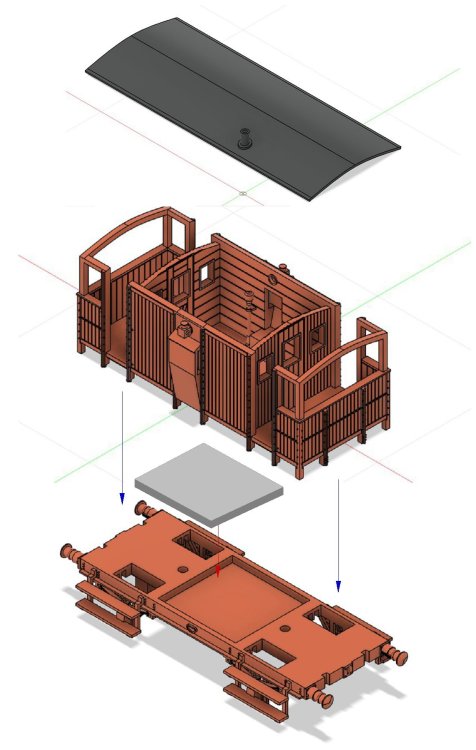
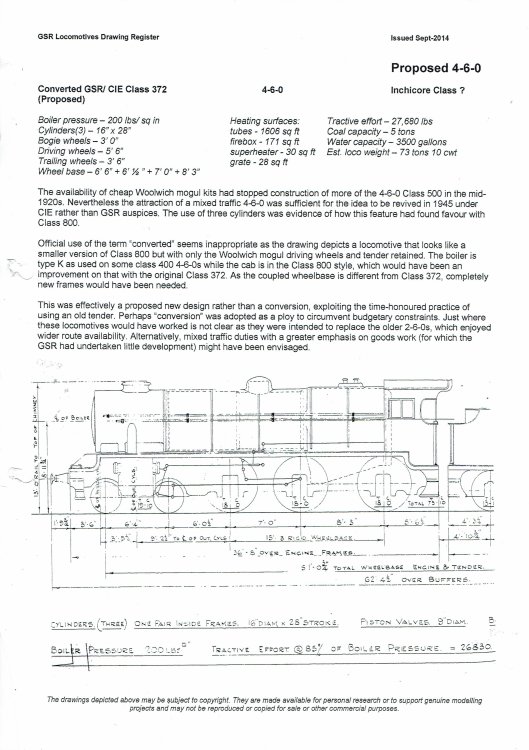
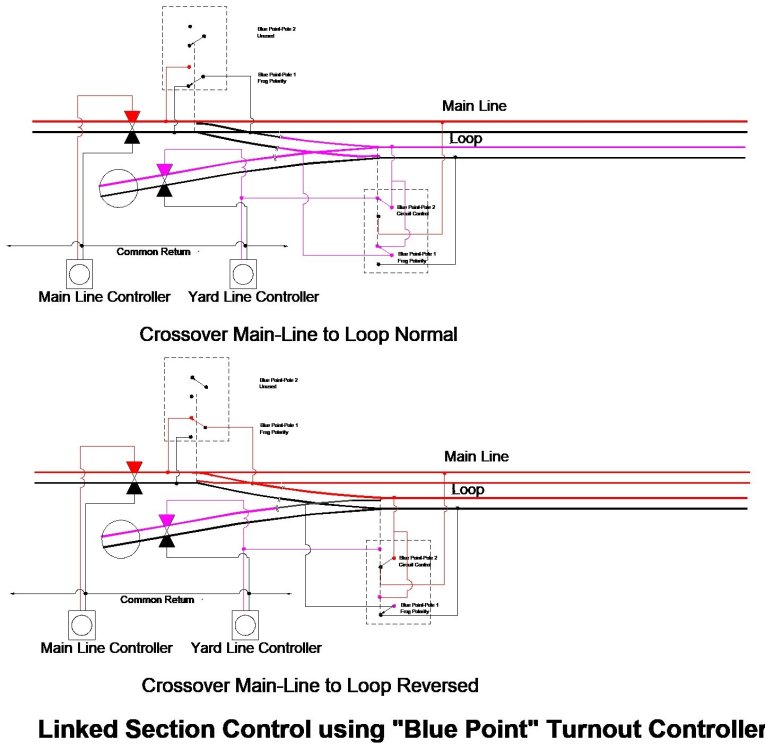
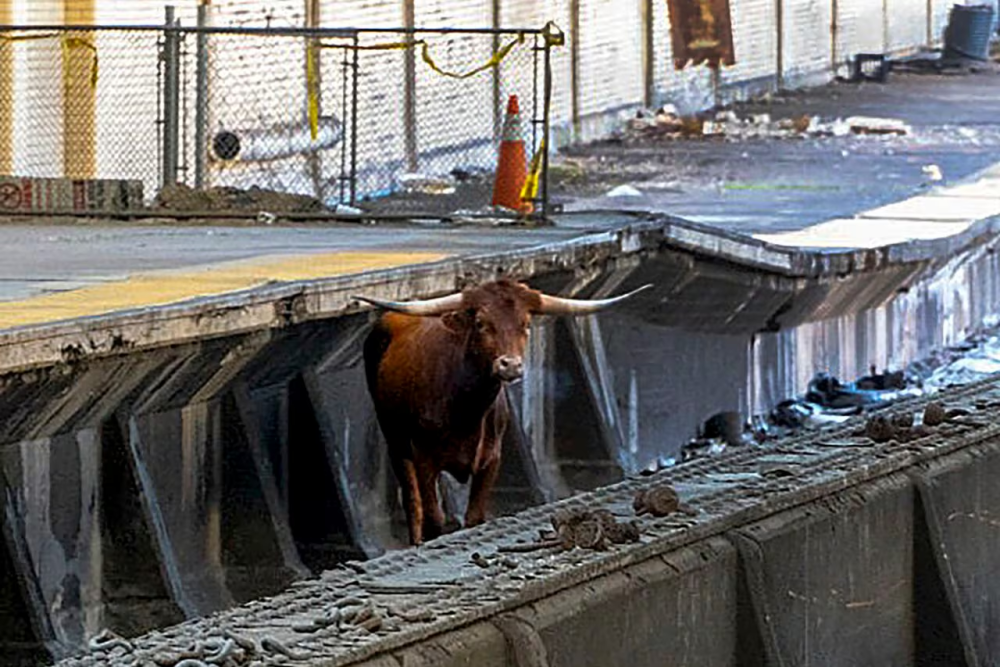
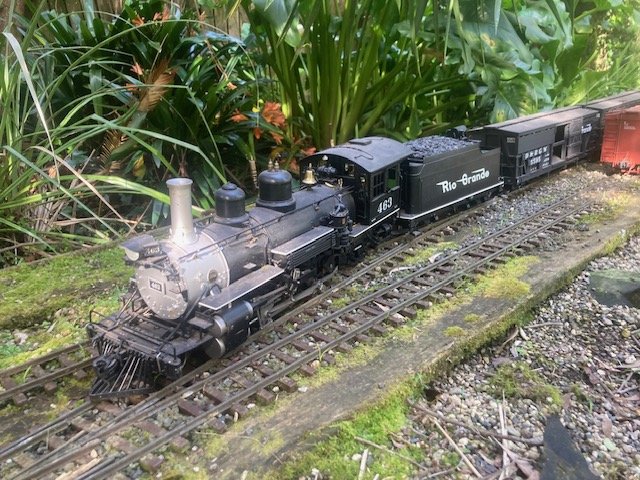
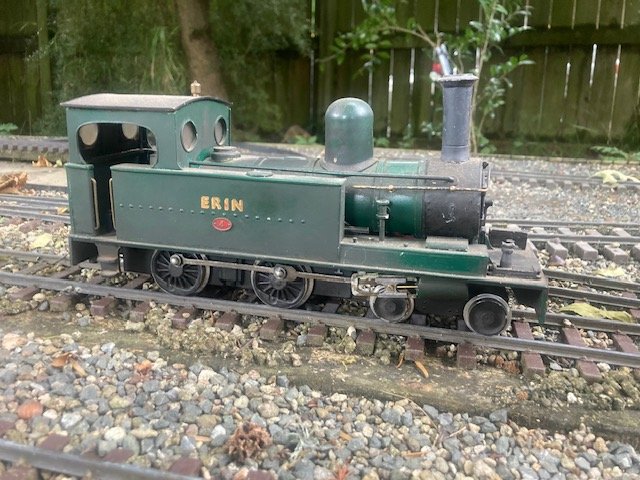
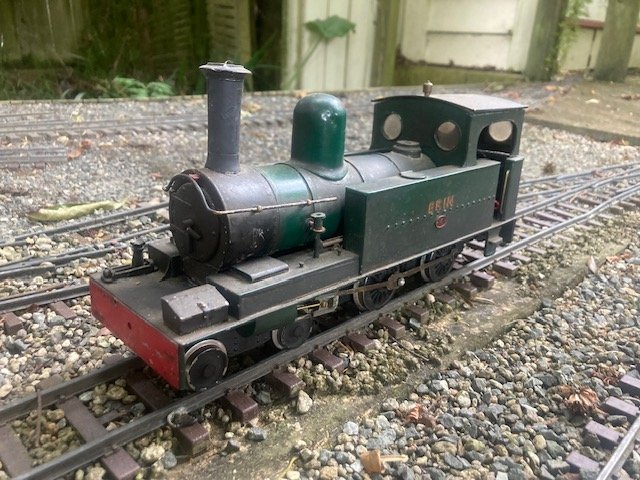
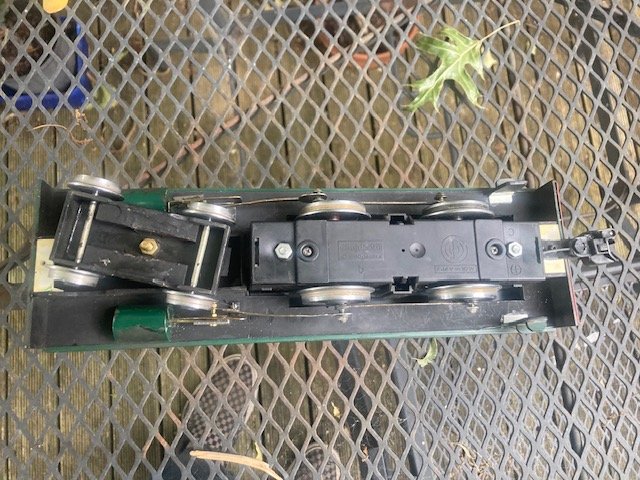
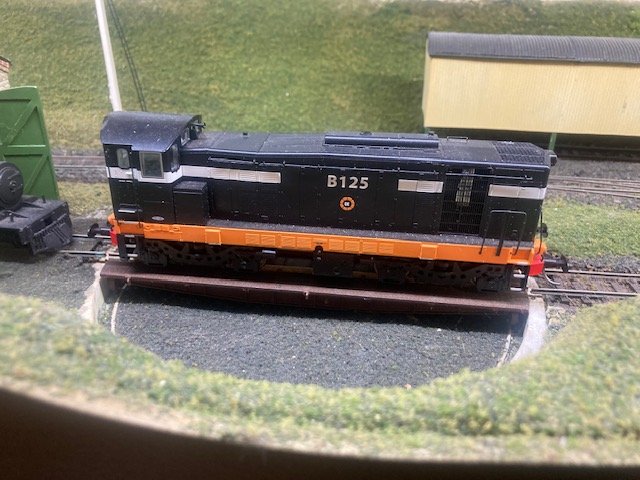
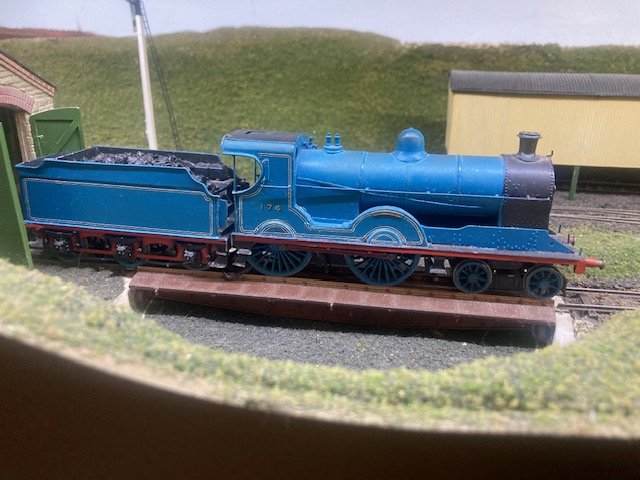
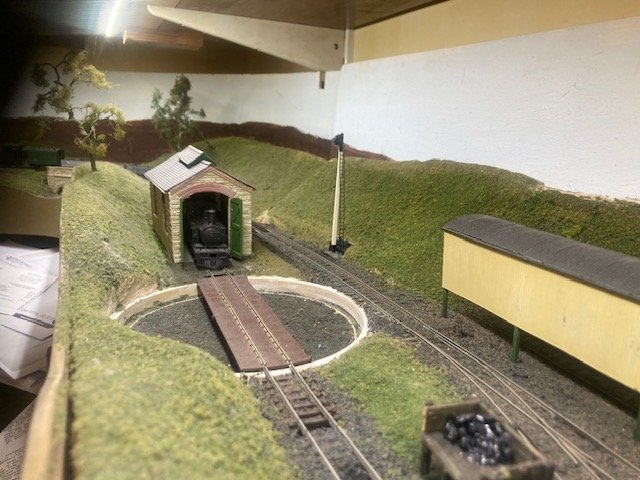
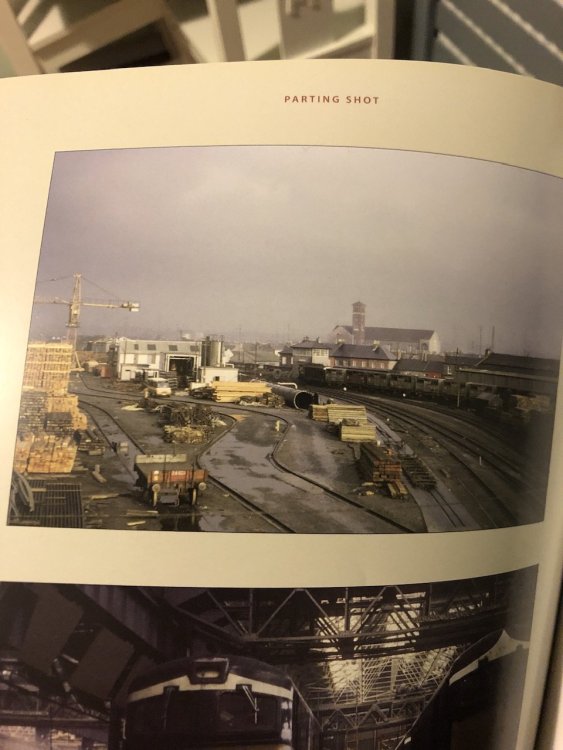
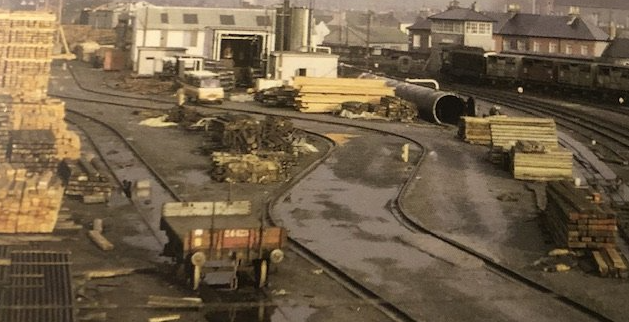
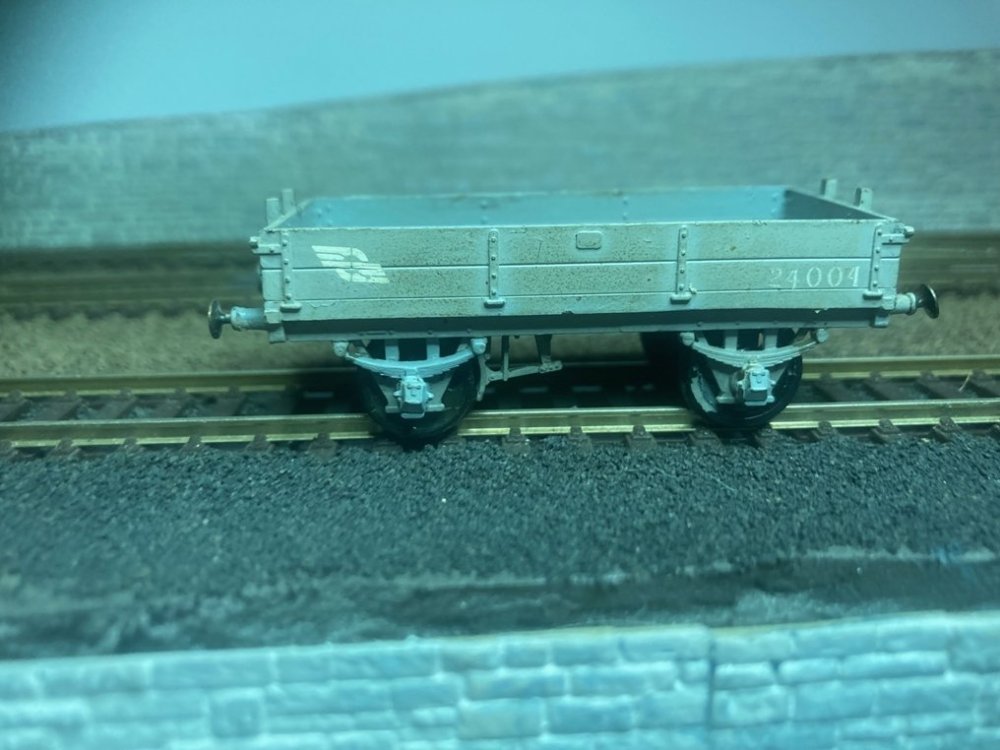
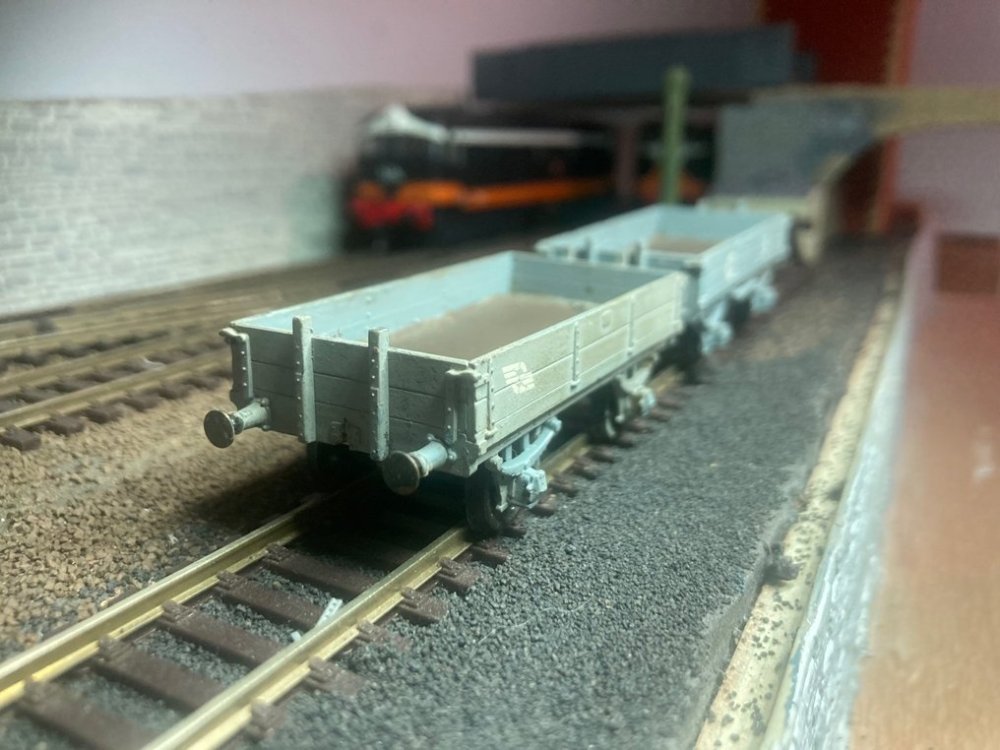
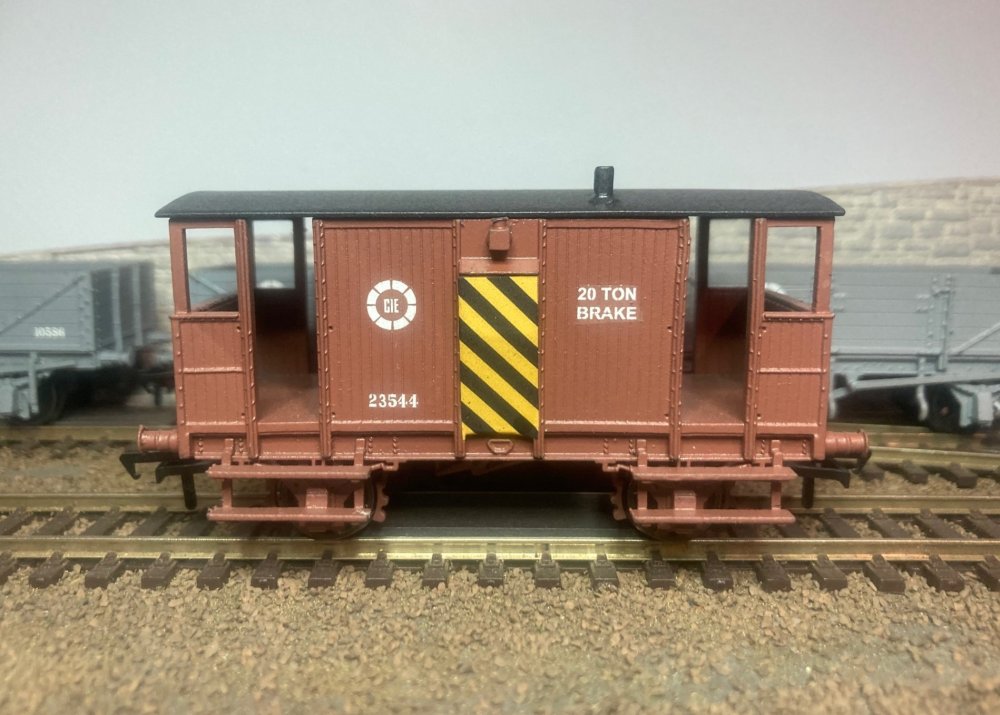
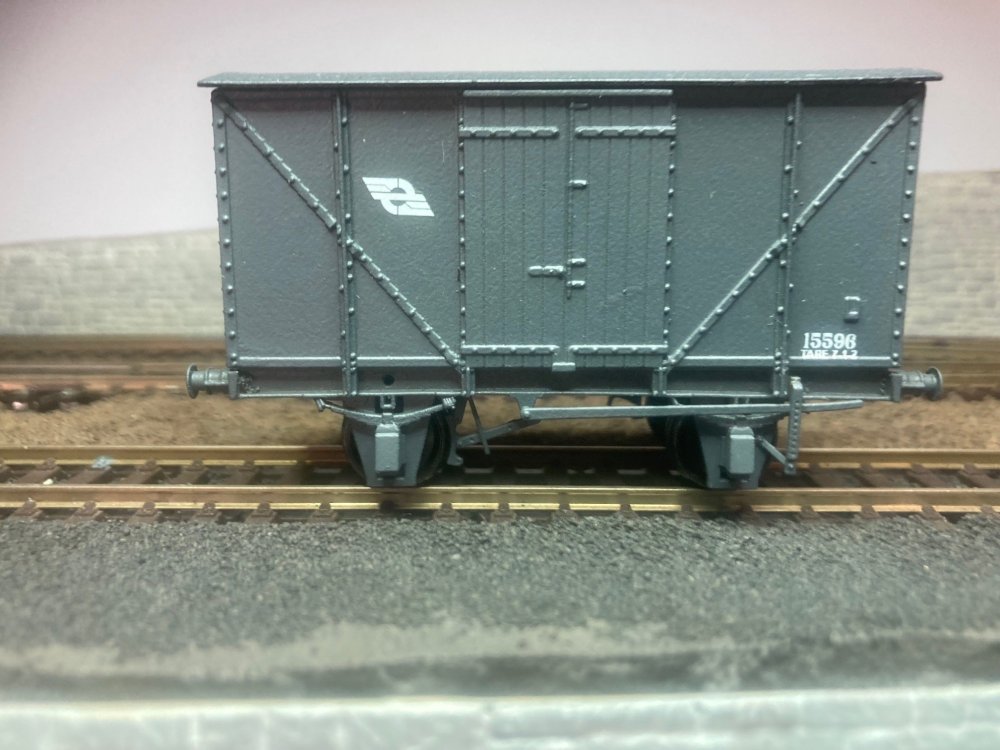
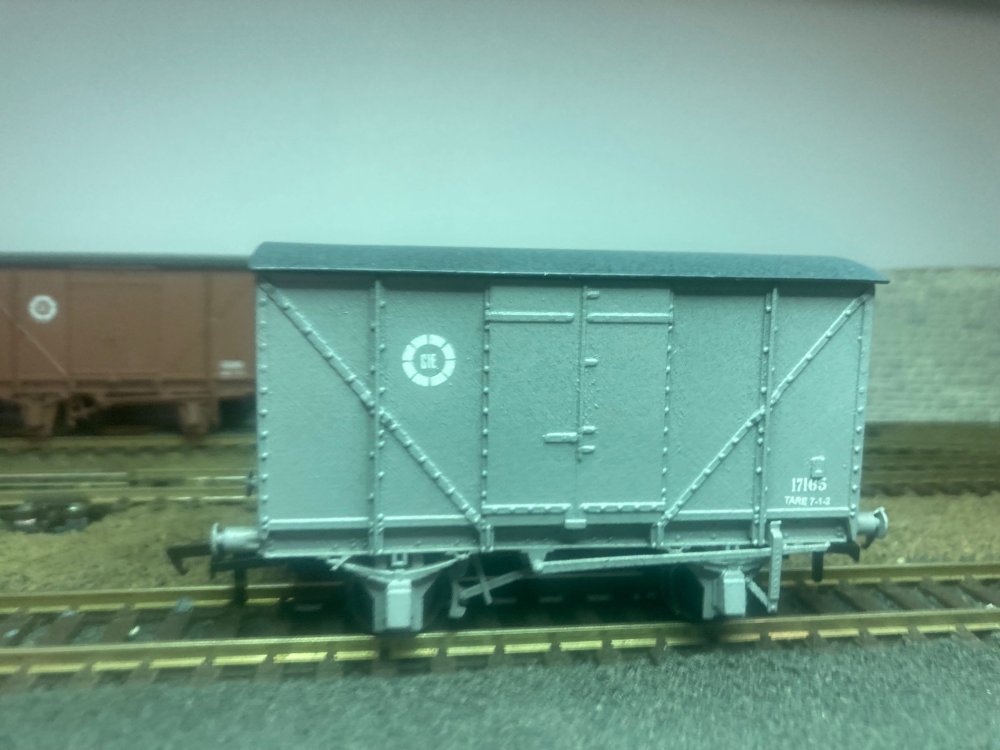

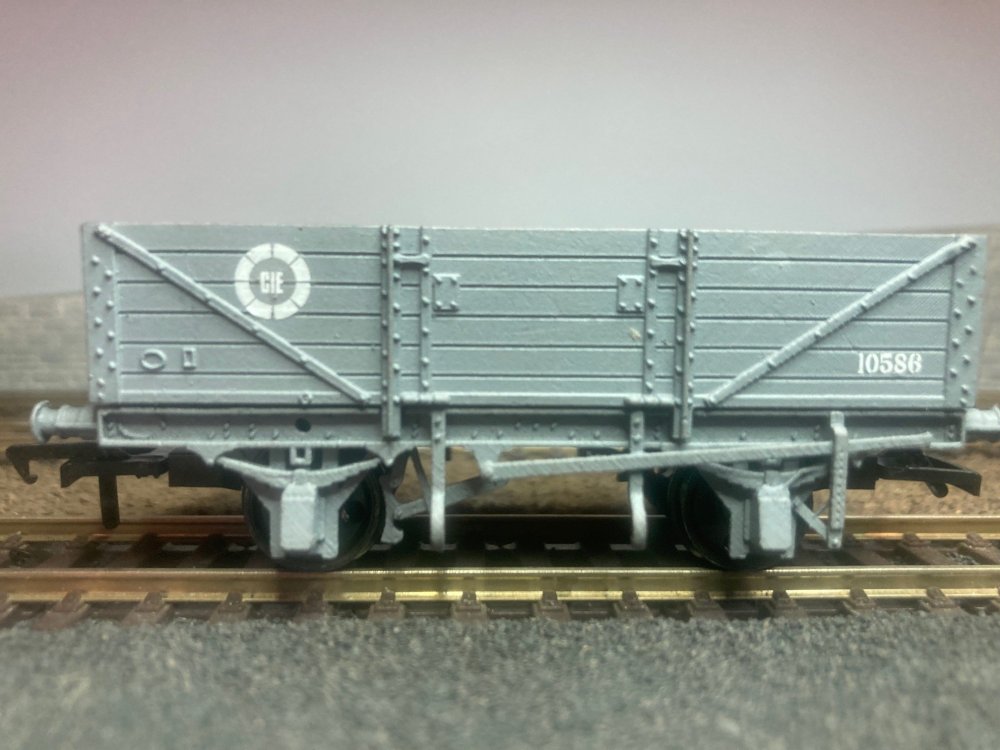








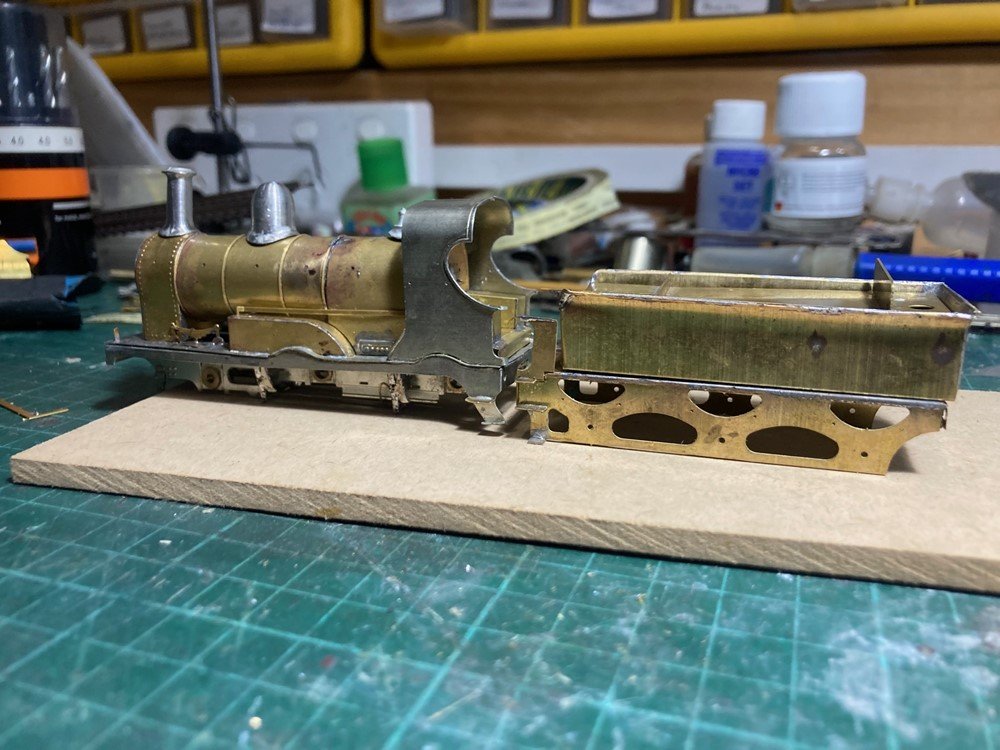
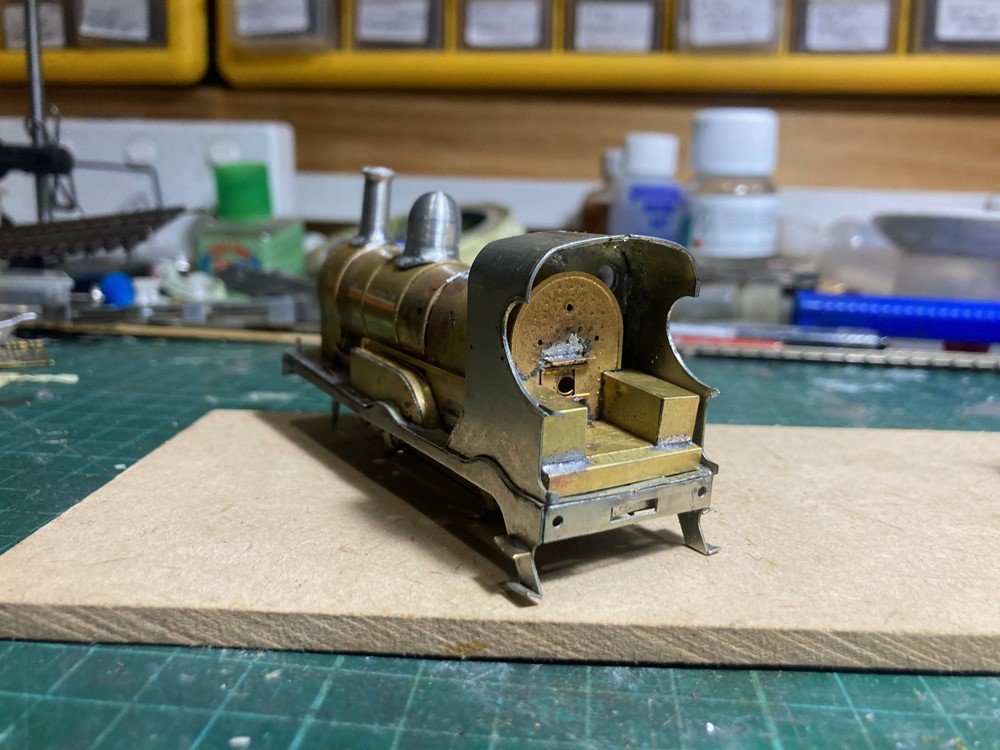
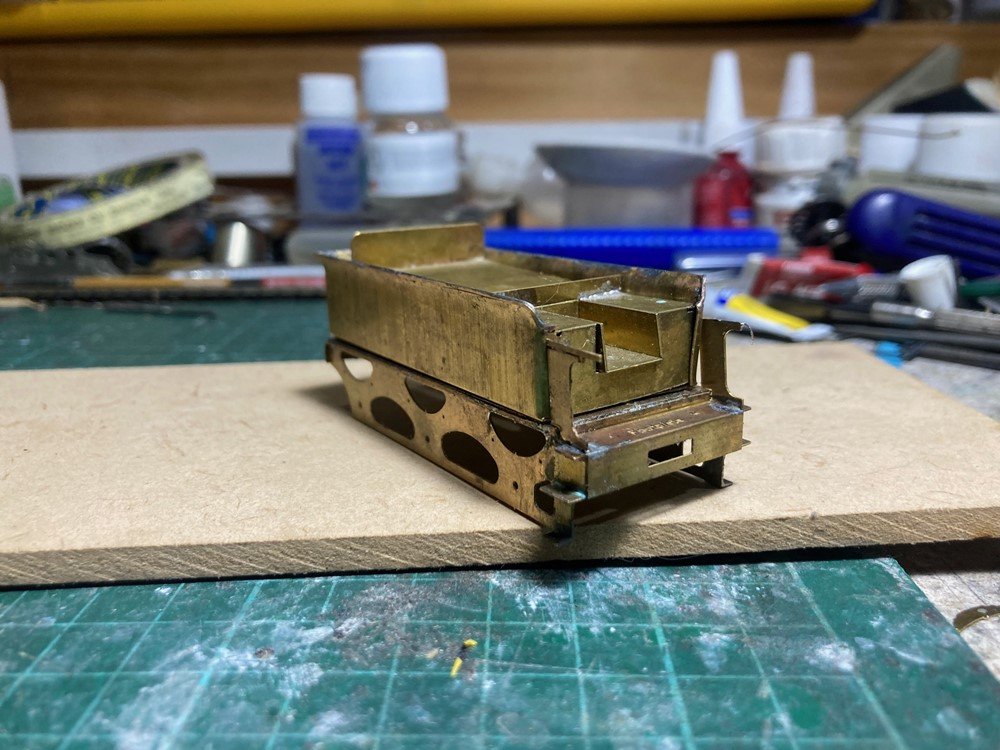
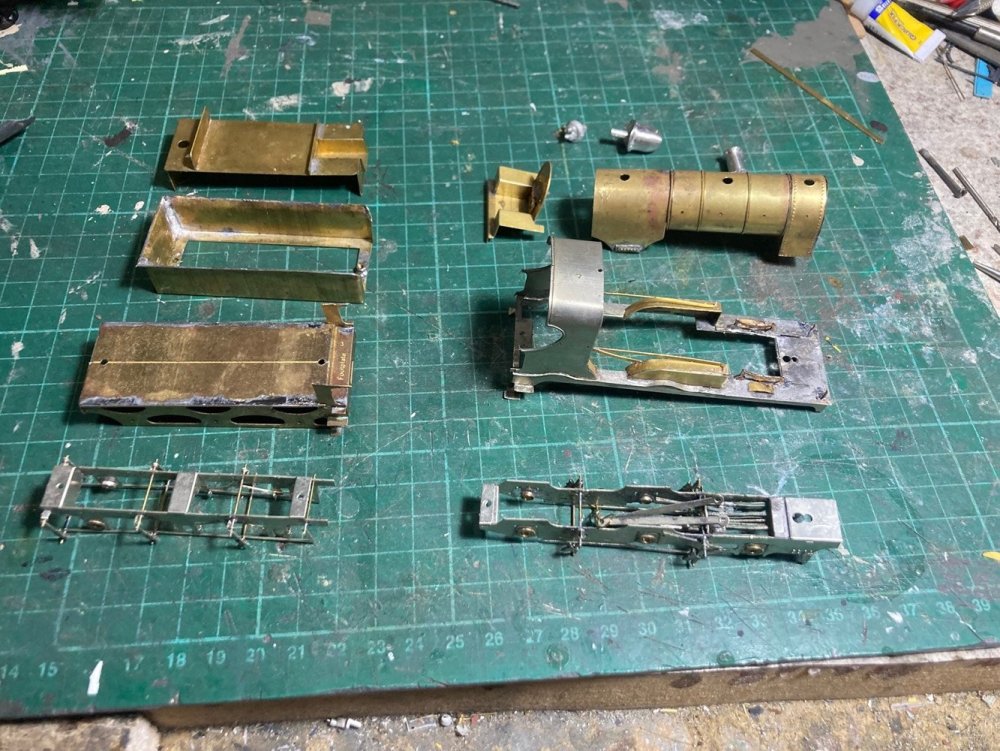
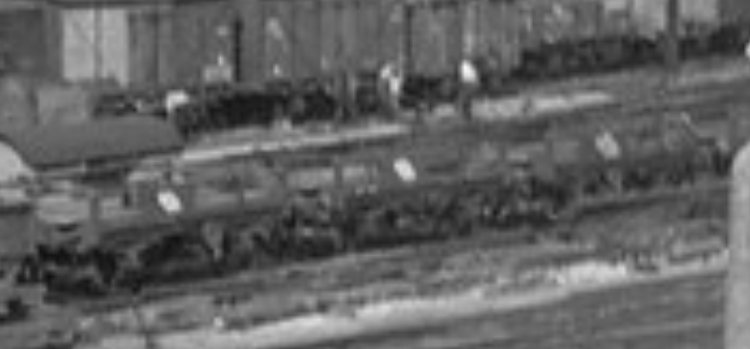

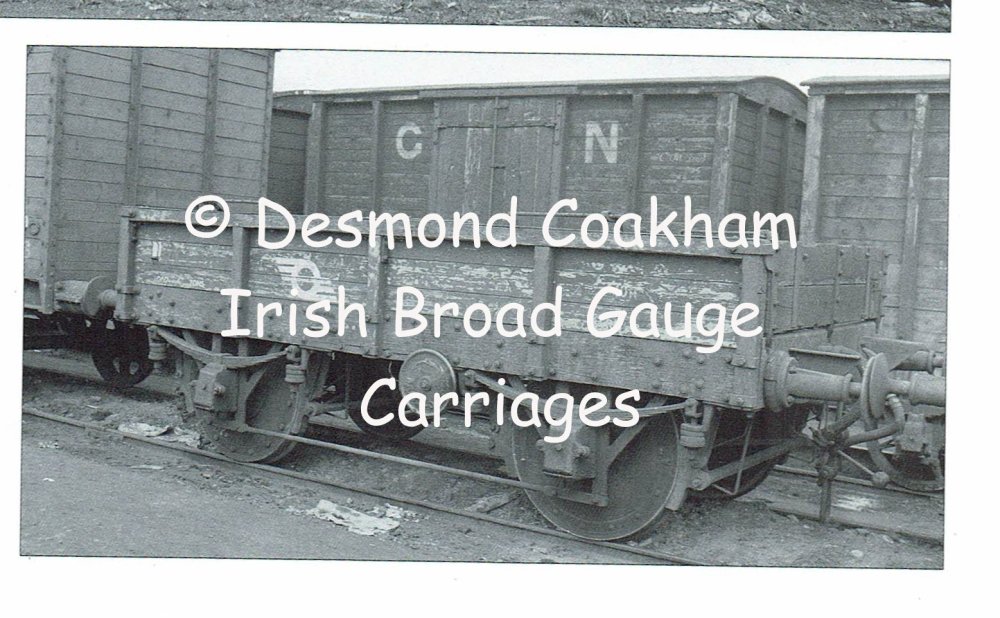
2024 Irish Model Speculation Thread!
in General Chat
Posted
BosKoney (Stephen) has stated that there are two steam projects for 2025/6 which will be revealed once they have reached an advanced point when Engineering samples / prototypes (*EP's) are in hand during 2024.
Based on IRMs track record for accuracy they likely to be locos that they could physically measure/scan, there is too much guess work involved to produce a model from surviving CIE/GSR diagrams, very few detail drawings of CIE steam locos survive.
Interestingly the RPSI scanned their loco fleet about 15 years ago in the expectation that a rtr manufacturer would produce models of some of their locos.